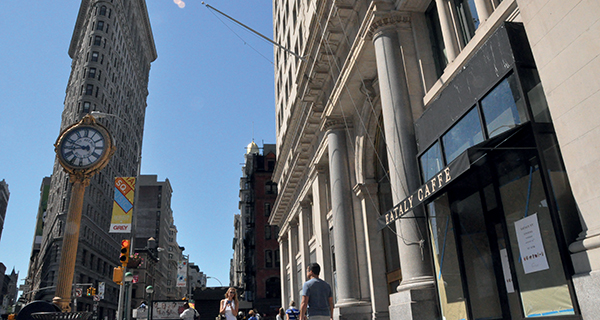
Some years ago the New York Times wrote that Eataly had become one of the major tourist attractions of the Big Apple. The initially unexpected hit is still today confirmed by the numbers. Every year approximately 6 million visitors flock to the store (opened in 2010) located on the famous Fifth Avenue. At first visitors were almost exclusively tourists, over time the New Yorkers began to walk through the doors of the store which was considered a guarantee of quality Italian Food. In 2013, a second store was opened in Chicago. After a three-year break, the spotlight is once again on New York City where a second Eataly store just opened. In October, it will be Boston’s turn and then Los Angeles’ in March 2017. In a conversation with Dino Borri, VP of Purchasing for Eataly USA we focused on those strategic decisions that were at the base of the American project’s success.

Dino, what are the food-related slogans that are most popular in the States?
Today, there are popular leitmotifs, such as “eat better, eat less,” as well as “buy more quality, but buy less.” I believe that, in nutrition, the important thing is to keep a balance. In our store, customers can find plenty of fruit and vegetables as well as the highest quality meat. You have to find a balance between your choices and consumption habits.
Does competition concern you?
No, that’s because if a sector becomes more competitive, as a result, the overall quality of its offer will increase. I like to think of our stores as art galleries, where the producers are the artists and the food they offer the artworks.
In your Eataly, the offer is mostly made up of Italian offers, right?
It is obvious that we want to put on the shelves the best food biodiversity of Italy, but in terms of fresh food we must inevitably deal with different dynamics. We cannot, for example, sell fresh fish from Italy; we prefer to knock on the doors of the best local fishermen on Long Island.
Yet, there are those who criticize your choice to have big brands on the shelves. What would you say about that?
Simply that we do not regret it. It is fair to remember that it was the best known Italian brands that enabled the agri-food sector of our country to truly start that international expansion process.
How is business going in the United States?
Six years after the debut in New York City, we are still recording a positive growth rate. We are pleased and now we’ve just opened a second store within the new World Trade Center. We will soon debut in Boston and, starting in March 2017, we will also be in Los Angeles.
What are the greatest challenges for you now?
To educate the American people to cook Italian food properly. Setting aside New York City, if we look at other less international cities, we find products that, in some cases, are barely edible. A true culinary culture is missing. For this reason, in New York, we are organizing over 200 cooking classes many of which are reserved for high school students.
